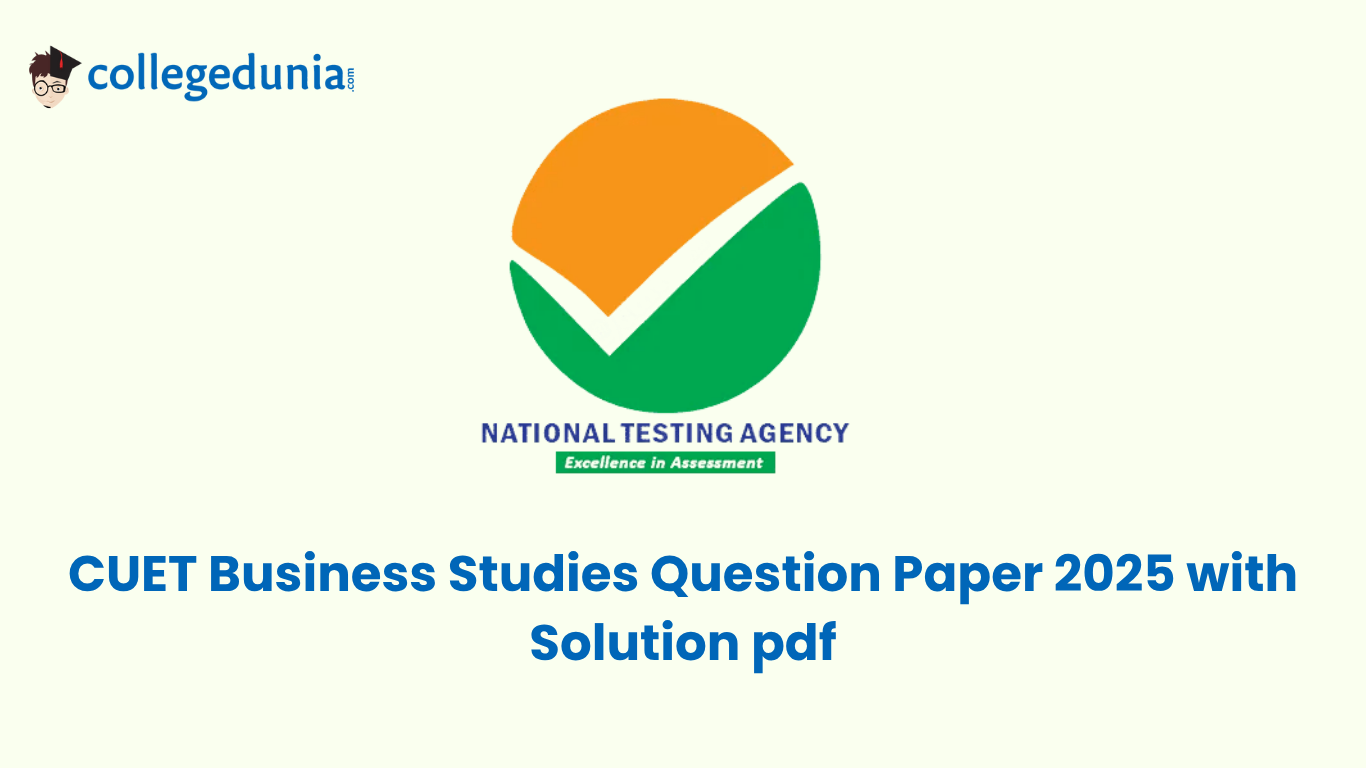NTA is conducting the CUET 2025 exam from 13th May to 3rd June. CUET Business Studies Question Paper 2025 with Answer Key and Solution PDF for May 13th is available here for download. CUET Business Studies was easy to moderately difficult.
As per the exam pattern, the CUET Business Studies exam consiss of 50 questions for 250 marks to be attempted in 60 minutes. 5 marks are awarded for each correct answer, and 1 mark is deducted for incorrect answer.
Also Check:
CUET Business Studies Question Paper 2025 with Answer Key
| CUET 2025 Business Studies Question Paper May 13 | Download PDF | Check Solutions |

CUET 2025 Business Studies May 13 Questions
Question 1:
A company hired consultants to restructure departments for better efficiency. Identify the management function.
Select the feature of management shown when activities are directed toward a common goal.
Which of the following best reflects that management aims at achieving results through others?
Which principle of Fayol suggests “one head, one plan for a group of activities”?
Identify the scientific principle Taylor introduced to replace outdated practices.
Introduction of UPI payments across rural India is an example of which environmental dimension?
Which of the following does not characterize the business environment?
Trade policies, taxation rules, and subsidies fall under:
“Planning bridges the gap between where we are and where we want to go.” Identify the features of planning.
Arrange in correct sequence:
(i) Setting objective
(ii) Identifying alternatives
(iii) Developing premises
(iv) Evaluating options
Which of these is a feature of informal organisation?
Identify the element of delegation where the subordinate is answerable for the outcome.
Internal sources of recruitment may lead to:
Which type of test measures existing job knowledge and skills?
Which of the following is not a feature of directing?
Maslow’s hierarchy includes all except:
“Only a 5% increase in material cost was found critical.” What technique is this?
Which of the following is a limitation of controlling?
“Coordination integrates group efforts and ensures unity of action.” This highlights that coordination is:
According to Taylor, “each employee should receive orders from one superior only.” This reflects:
Which of these is a strategic plan?
Arrange the steps of organizing:
(A) Division of work, (B) Departmentalisation, (C) Assignment of duties, (D) Authority relationships
Identify the correct sequence in the selection process:
(A) Test, (B) Interview, (C) Reference check, (D) Job offer
What is the last step of the controlling process?
Right to be heard ensures:
CUET Business Studies Expected Difficulty
Candidates have to answer 50 multiple choice questions within a duration of 60 minutes; all the questions are compulsory to attempt.
In CUET 2025, the CUET Business Studies is expected to be easy to moderate. Here are some topics with higher weightage:
| Section | Expected Difficulty | Key Topics |
| Principles of Management | Easy–Moderate |
|
| Business Environment | Easy |
|
| Marketing & Finance | Moderate |
|
| Human Resource Management | Moderate |
|








Comments